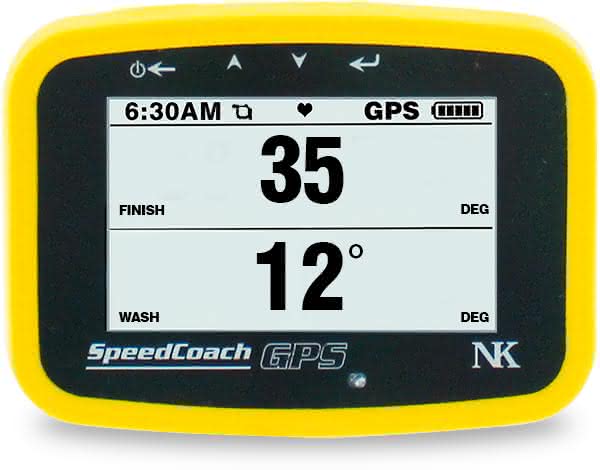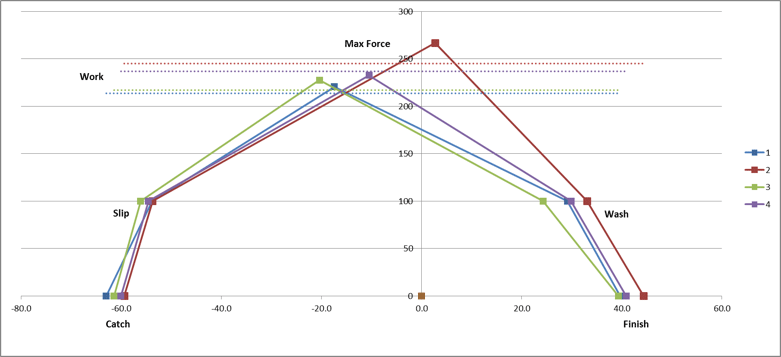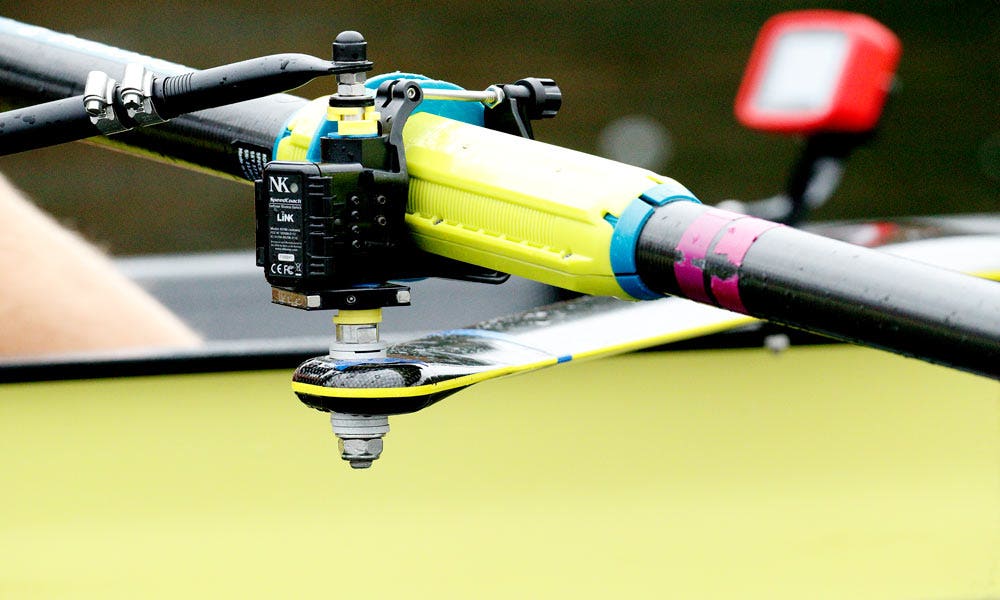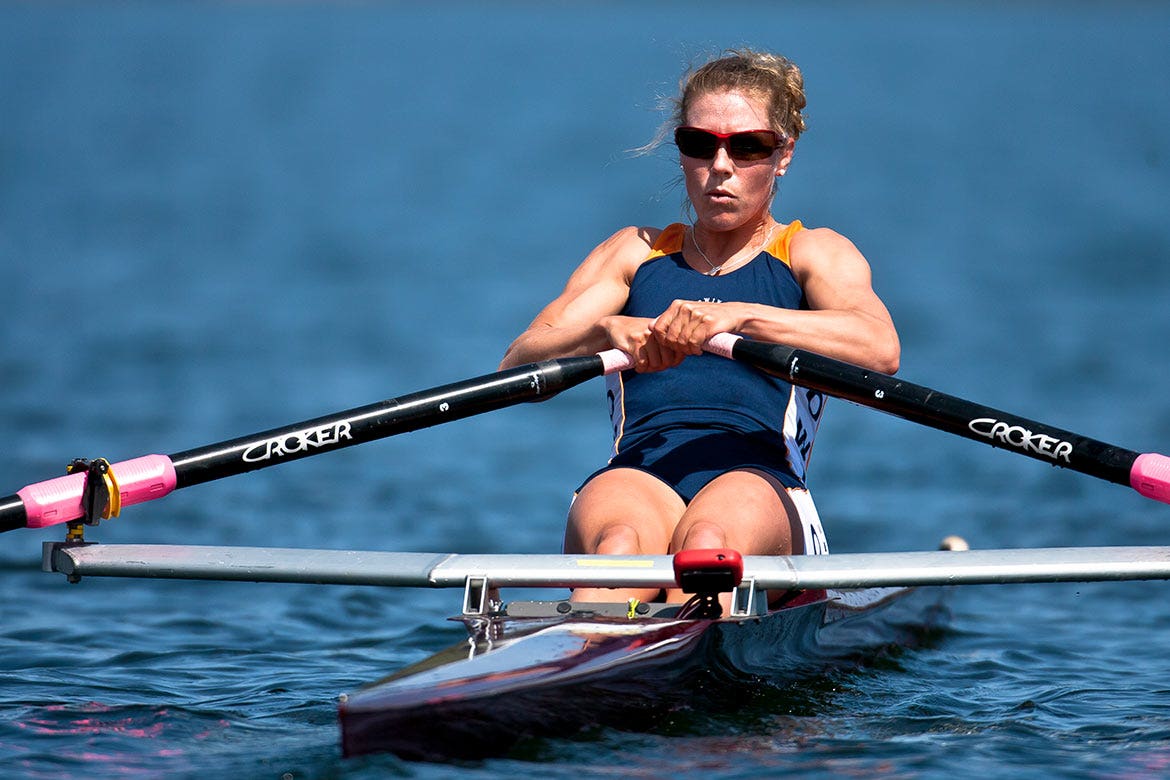EmPower Oarlock
Get simple technical feedback while you row with the EmPower Oarlock system. Install in minutes with no special tools, and see information about your length, engagement and power right on your SpeedCoach Model 2 with Training Pack.
The EmPower Oarlock requires a SpeedCoach GPS Model 2 with Training Pack firmware. If you have a SpeedCoach GPS 2, but it doesn't have the Training Pack firmware upgrade, you can upgrade now.
Please note that Empower Oarlocks are not designed for use with a Swingulator®
Not sure if the EmPower Oarlock will work on your boat? View the EmPower Oarlock Compatibility Chart.
How do you want to improve?
Coach yourself at any level
Provides Immediate Feedback
With Real-time technical feedback and effort measurement, you can make sure you are hitting your targets for technical proficiency and training effectiveness when you need it most: while you are rowing.
Quantifies Technique
Rowing faster is a game of increments- "quicker catch", "more compression", "less layback", "longer leg drive", etc. Getting a feel for these subjective concepts on the water can take hundreds of hours By Quantifying catch, finish and force application into simple numerical targets, technical changes become much easier to learn and maintain.
Measures Training Effort
Achieving peak fitness requires an optimized training load, and the EmPower Oarlock takes the guesswork out of determining training effort. By quantifying work, power and heart rate, you can consistently perform within suggested training zones to maximize physiological training benefits.
"It makes rowing more intellectual, conscious, better control. What we feel is very different from what we really do. This measurement tool is objective."
-Dr. Valery Kleshnev
Founder Bio Row
A coaching tool like no other
Set Clear Targets for your Athletes
Supplement your words and drills with measureable targets for each rower's technique and capabilities. "Sit up at the catch" becomes, "Catch at 55 degrees". "Row half-pressure" becomes, "Stay between 150-175 watts for 20 minutes".
"You certainly have something there that athletes will like! Your system is actually quite a good help for us at this stage. Everything works so easily and without changing anything on the boat, it is indeed helping us!"
-Volker Nolte
Assistant Professor Biomechanics and Coaching and Head Rowing Coach at University of Western Ontario
It's Simpler to use than you think
EmPower oarlock installation is as straightforward as changing a traditional oarlock. Realize noticeable improvements within the course of your normal training sessions.
So much more than just Power
Everyone knows that erg power doesn’t correlate exactly with boat speed. Understand WHY and help each athlete maximize their force application through the pin. Synchronize crew power application for maximum effectiveness.
Foundation of a Boat-to-Coach system
The EmPower Oarlock serves as a cornerstone component of NK Sports' Performance Measurement Ecosystem. Using it in combination with LiNK Logbook, SpeedCoach GPS, and/or CoxBox GPS, you create the opportunity for boats to stream oarlock data via mobile phone to the cloud for real-time viewing and feedback, or post-workout analysis and review.

Get Immediate Insights
View your athlete’s technique and output while they are rowing. Just stay within shouting distance of your athletes to see their real-time technical and effort measurements.
Go Deeper with Data Review
Review Workout Data on the SpeedCoach GPS to establish targets and monitor your athletes’ performance against them. For even deeper insights, upload workouts to LiNK Logbook and analyze per-stroke data from any portion of the recorded workout.
What can you measure?

Paired with an EmPower Oarlock in Classic Mode, the SpeedCoach GPS 2 with Training Pack still has the same four windows it always did, but now you can customize those windows with any of the following metrics:
- Stroke Rate
- Catch Angle
- Effective Stroke Length
- Average Work
- Current 500m Split
- Slip
- Distance Traveled Per Stroke
- Peak Force
- Average 500m Split
- Finish Angle
- Power
- Oar Angle at Peak Force
- Stroke Count
- Wash
- Average Power
- Force (average over whole stroke)
- Total Distance
- Total Stroke Length
- Work
- Elapsed Time
- Heart Rate
5 Dedicated Skill Screens

Catch and Slip
See how the oar angle at the catch affects how quickly the blade is engaged.
Keep athletes in team boats focused on the front end of the stroke so they can align their catch angles better.

Work (joules)
Use a performance metric that is unaffected by current, wind, weight or stroke rate.
Measure individual contribution in team boats to keep athletes accountable and help them improve.

Finish and Wash
Quickly determine whether changing the amount of layback is helpful or hurtful to find the sweet spot for back-end length.
Monitor Wash throughout a race or practice piece to make sure fatigue doesn't affect how powerfully you're sending the boat.

Length
Stay long and connected in the last 500. See Total Length and Effective Length at the same time to make sure you're getting the most out of every inch of your drive.
| Specifications | |||
|---|---|---|---|
| Included in Package |
| ||
| Water Resistance | Waterproof (IP67, NEMA-6). | ||
| Control Unit Weight | sweep: 0.63lbs (288g) (including magnet bar), scull .55lbs (251g) (including magnet bar) | ||
| Unit Dimensions | 6.5"x4"x1.75" | ||
| Controls | One waterproof button for pairing/power | ||
| Battery Type | AA battery | ||
| Battery Life Expectancy | Rechargeable AA's can provide 8-20 hours of operation | ||
| Case | Impact resistant (MIL-STD-810G, Transit Shock, Method 516.5, Procedure IV). Sun and saltwater resistant. | ||
| Warranty Period | 2 Year Warranty | ||
| Measurements | |||
|---|---|---|---|
| Metric | Units | Range | Notes |
| Catch Angle | Angular Degrees | Angle of the oarlock when direction of motion reverses from recovery to drive direction. | |
| Effective Length | Angular Degrees | Total degrees traversed by the oarlock between the 100N for sculling/200N for sweep slip and wash thresholds. | |
| Finish Angle | Angular Degrees | Angle of the oarlock when direction of motion reverses from drive to recovery direction | |
| Force | Newtons | to 1/10 | The force applied to the oarlock face averaged over the full stroke. |
| Max/Peak Force | Newtons | to 1/10 | The maximum force applied to the oarlock face at any point in the stroke. |
| Peak Force Angle | Angular Degrees | The degrees of angle at which the peak force occurred in the stroke. | |
| Power | Watts | to 1/10 | The rate of work being output. Power can be increased by doing more work per stroke, or taking more strokes per minute. |
| Average Power | Watts | to 1/10 | Power per stroke averaged over the entire interval (if using a SpeedCoach). Resetting the clock will reset the average power. |
| Slip | Angular Degrees | Angle degrees traversed by the oarlock before the force exceeds 100N for sculling/200N for sweep - a threshold below which the work being done on the oar is doing relatively little to increase the speed of the boat. | |
| Wash | Angular Degrees | Angle degrees traversed by the oarlock after the force drops below 100N for sculling/200N for sweep – a threshold below which the work being done on the oar is doing relatively little to increase the speed of the boat. | |
| Work | Joules | to 1/10 | The force times the length of the stroke. Work measures the effectiveness of each stroke. |
| Average Work | Joules | to 1/10 | The average force times the length of the stroke. Work measures the effectiveness of each stroke. |
| Length | Angular Degrees | Total degrees traversed by the oarlock between catch and finish. | |
| Effective Length | Angular Degrees | Total degrees traversed by the oarlock between the 100N for sculling/200N for sweep slip and wash thresholds. | |
LiNK is NK’s connected environment which greatly expands performance and improves capabilities of the NK LiNK Wireless platform. The LiNK environment will include Bluetooth® low energy wireless connectivity to heart rate belts, sensors, phones, tablets, PC’s (dongle required) and Macs (dongle required) as well as cloud connectivity, web analytics and real-time tracking via apps. LiNK Logbook (mobile only) features include:
QUICK AND EASY TO STORE SESSION DATA
- Pair with your NK device using Data LiNK mode to import session memory to your secure account.
REVIEW AND ANALYZE SESSION PERFORMANCE
- Quickly find and select sessions from the calendar view.
- Review your course overlayed on a map.
- Check boat metrics for any or all of the session.
- Get a clear understanding of your rowing style by viewing your stroke profile.
QUICK AND EASY TO STREAM LIVE DATA
- Pair with your NK device using Live Stream mode.
- Keep the paired phone and NK device together on the water while training or racing.
SAFETY ON THE WATER
- Coaches, family, friends and spectators can view your location on the map viewer. Just scan the map viewer or boat list to locate any streaming boat.
ESSENTIAL COACHING TOOL
- Coaches can view real-time location and performance measurements during workouts in order to provide more effective feedback. All performance measurements in the SpeedCoach/CoxBox GPS are available in the live viewer, so coaches can select which measurements to monitor during each session.
IMPROVED SPECTATOR EXPERIENCE
- Spectators and coaches can view real-time position and performance measurements during an event (please check with the regatta officials regarding the legality of cell phone use during a race). With all entries streaming their data, spectators can see who's ahead by how much - all in real-time! Note: Bluetooth® low energy products will NOT work with ANT+ heart rate belts. Bluetooth® low energy belts are compatible with all iOS fitness tracking apps.
NK offers LiNK programs for Windows and OS X/MacOS, which require the use of a NK Bluetooth Low Energy USB Dongle to provide compatible Bluetooth support. LiNK for Windows and OS X only provide a way to upload your data for export as a CSV or FIT file. We encourage using the NK LiNK Logbook app for iOS and Android, which allows you to upload, stream and review all the data in one spot without having to export to a 3rd party platform.
| Learn More about LiNK | Get LiNK Now! |
|---|---|
| LiNK for Windows | |
| LiNK for OSX | |
| LiNK Logbook for iOS | |
| LiNK Logbook for Android |


















